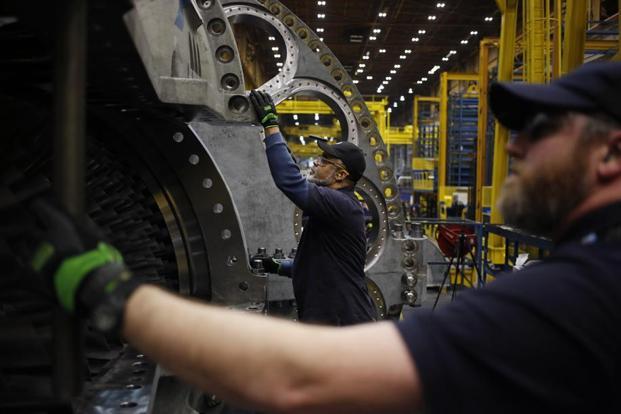After decades of false starts, artificial intelligence (AI) is already pervasive in our lives. Although invisible to most people, features such as custom search engine results, social media alerts and notifications, e-commerce recommendations and listings are powered by AI-based algorithms and models. AI is fast turning out to be the key utility of the technology world, much as electricity evolved a century ago. Everything that we formerly electrified, we will now cognitize.
read more – copyright by www.livemint.com
 AI’s latest breakthrough is being propelled by machine learning—a subset of AI which includes abstruse techniques that enable machines to improve at tasks through learning and experience.
AI’s latest breakthrough is being propelled by machine learning—a subset of AI which includes abstruse techniques that enable machines to improve at tasks through learning and experience.
Although in its infancy, the rapid development and impending AI-led technology revolution are expected to impact all the industries and companies (both big and small) in the respective ecosystem/value chains. We are already witnessing examples of how AI-powered new entrants are able to take on incumbents and win—as Uber and Lyft have done to the cab-hailing industry. Currently, deployed key AI-based solutions, across industry verticals, include:
Predictive analytics, diagnostics and recommendations
Predictive analytics has been in the mainstream for a while, but deep learning changes and improves the whole game. Predictive analytics can be described as the ‘everywhere electricity’—it is not so much a product as it is a new capability that can be added to all the processes in a company. Be it a national bank, a key supplier of raw material and equipment for leading footwear brands, or a real estate company, companies across every industry vertical are highly motivated to adopt AI-based predictive analytics because of proven returns on investment.
Chatbots and voice assistants
Chatbots have evolved mainly on the back of internet messenger platforms, and have hit an inflection point in 2016. As of mid-2016, more than 11,000 Facebook Messenger bots and 20,000 Kik bots had been launched. As of April 2017, 100,000 bots were created for Facebook Messenger alone in the first year of the platform. Currently, chatbots are rapidly proliferating across both the consumer and enterprise domains, with capabilities to handle multiple tasks including shopping, travel search and booking, payments, office management, customer support, and task management.
Image recognition, processing and diagnostics
On an average, it takes about 19 million images of cats for the current Deep Learning algorithms to recognize an image of a cat, unaided. Compared to the progress of natural language processing solutions, computer vision-based AI solutions are still in developmental stage, primarily due to the lack of large, structured data sets and the significant amount of computational power required to train the algorithms. That said, we are witnessing adoption of image recognition in healthcare and financial services sectors. Israel-based Zebra Medical Systems uses deep learning techniques in radiology. It has amassed a huge training set of medical images along with categorization technology that will allow computers to predict diseases accurately better than humans. […]
read more – copyright by www.livemint.com


After decades of false starts, artificial intelligence (AI) is already pervasive in our lives. Although invisible to most people, features such as custom search engine results, social media alerts and notifications, e-commerce recommendations and listings are powered by AI-based algorithms and models. AI is fast turning out to be the key utility of the technology world, much as electricity evolved a century ago. Everything that we formerly electrified, we will now cognitize.
read more – copyright by www.livemint.com
Although in its infancy, the rapid development and impending AI-led technology revolution are expected to impact all the industries and companies (both big and small) in the respective ecosystem/value chains. We are already witnessing examples of how AI-powered new entrants are able to take on incumbents and win—as Uber and Lyft have done to the cab-hailing industry. Currently, deployed key AI-based solutions, across industry verticals, include:
Predictive analytics, diagnostics and recommendations
Predictive analytics has been in the mainstream for a while, but deep learning changes and improves the whole game. Predictive analytics can be described as the ‘everywhere electricity’—it is not so much a product as it is a new capability that can be added to all the processes in a company. Be it a national bank, a key supplier of raw material and equipment for leading footwear brands, or a real estate company, companies across every industry vertical are highly motivated to adopt AI-based predictive analytics because of proven returns on investment.
Chatbots and voice assistants
Chatbots have evolved mainly on the back of internet messenger platforms, and have hit an inflection point in 2016. As of mid-2016, more than 11,000 Facebook Messenger bots and 20,000 Kik bots had been launched. As of April 2017, 100,000 bots were created for Facebook Messenger alone in the first year of the platform. Currently, chatbots are rapidly proliferating across both the consumer and enterprise domains, with capabilities to handle multiple tasks including shopping, travel search and booking, payments, office management, customer support, and task management.
Image recognition, processing and diagnostics
On an average, it takes about 19 million images of cats for the current Deep Learning algorithms to recognize an image of a cat, unaided. Compared to the progress of natural language processing solutions, computer vision-based AI solutions are still in developmental stage, primarily due to the lack of large, structured data sets and the significant amount of computational power required to train the algorithms. That said, we are witnessing adoption of image recognition in healthcare and financial services sectors. Israel-based Zebra Medical Systems uses deep learning techniques in radiology. It has amassed a huge training set of medical images along with categorization technology that will allow computers to predict diseases accurately better than humans. […]
read more – copyright by www.livemint.com
Share this: